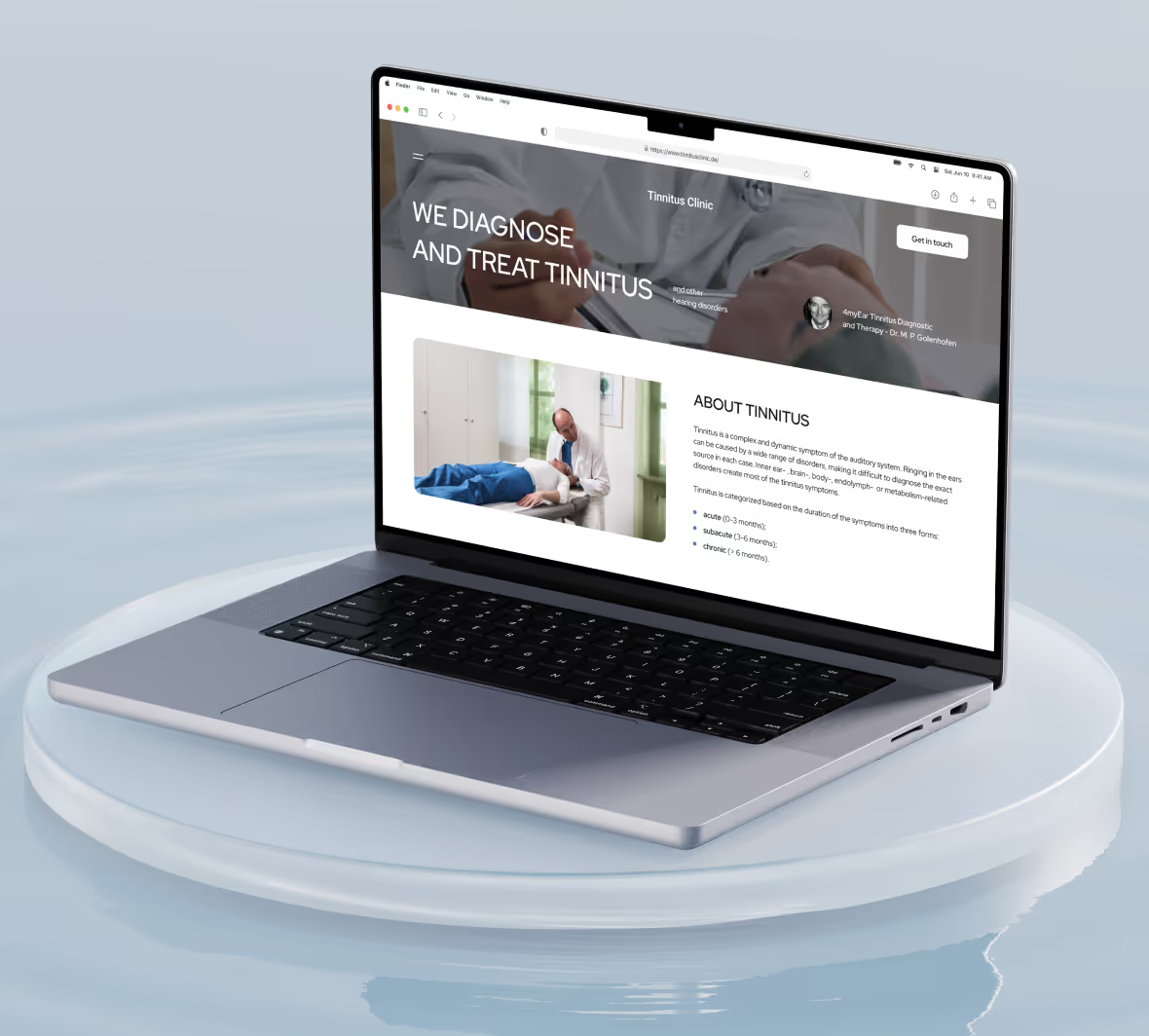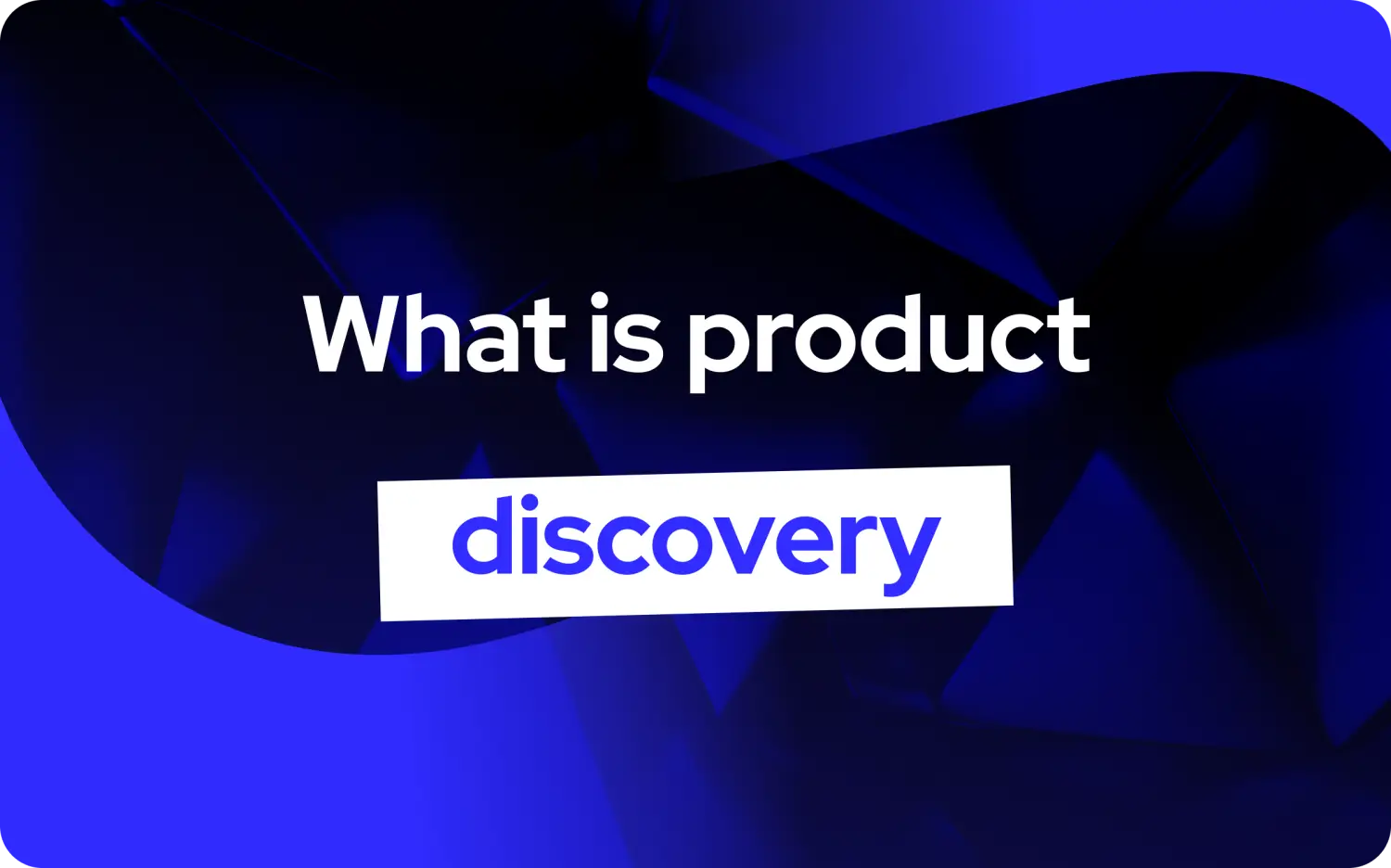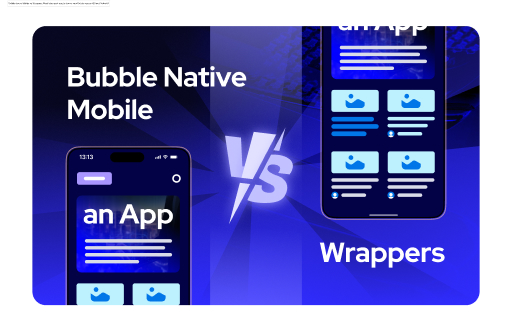
Building a new product is challenging. You have to figure out what users want, how to get it to them quickly, and how to do it all without breaking the bank. An MVP development team can help you tackle this challenge. This guide will help you find the right one for your project to build a no-code MVP that meets your goals, user needs, and budget.
Minimum Code is a no-code development agency that can help you build an MVP without breaking the bank. They can help you choose the right MVP development team for your project to support your goals and ensure success.
What is an MVP (Minimum Viable Product)?

An MVP, or Minimum Viable Product, is a bare-bones version of a product that includes only the most essential features required to solve the core problem for your users. The idea is to focus on the primary functionality that provides value, leaving out any advanced or "nice-to-have" features that can be added later. Launching an MVP allows startups to quickly validate their product idea in the marketplace while avoiding unnecessary spending on full-scale development.
For a SaaS startup, an MVP is often a simplified software solution that provides just enough functionality to attract early adopters. This could be anything from a web app to a lightweight version of a service platform that allows users to experience the basic features of the final product. Rather than building a fully featured product immediately, the MVP will enable you to test your idea and gauge interest before further investment.
Why It Matters
The main goal of an MVP is to validate whether there is demand for your product with real users. This reduces the risk of building a product that nobody wants. By collecting feedback from early adopters, you can decide which features are essential and which can be postponed or discarded. This approach is cost-effective and can save your startup valuable time and resources. With an MVP, startups can save money and time developing a product that might resonate with the target market. Instead of spending months on a fully-fledged product, launching an MVP helps to gather critical data early on, allowing for necessary pivots or improvements before scaling the product.
Practical Tip
Building an MVP is about striking a balance between speed and quality. You don’t want to rush out a product riddled with flaws, but you don’t want to delay your launch unnecessarily. By focusing on core functionalities and leveraging tools like no-code platforms, you can launch quickly, gather user feedback, and iterate based on real-world data. Working with a development team that understands the nuances of building MVPs—especially for SaaS startups—can significantly reduce the time and resources required to launch. Agencies like Minimum Code, specializing in rapid MVP development, can help streamline this process.
The Role of MVP in SaaS Startup Success
The MVP is pivotal for SaaS startups in determining the product's long-term success. Unlike traditional businesses focusing on physical products or one-time purchases, SaaS products are typically subscription-based, meaning the product must continually evolve to retain users. The MVP is a critical component of this ongoing evolution because it is the initial test of your product’s value in the market.
An MVP allows SaaS startups to test hypotheses about what users want and whether they will pay for the service. By releasing the MVP early, you can test your assumptions, see how users interact with your product, and gather feedback that will shape the future of your product’s development. You can then use this data to refine your value proposition and ensure you’re offering a solution that meets user needs before investing more time and money in advanced features.
Another critical aspect of launching an MVP in the SaaS space is gaining early traction. Startups often face pressure to demonstrate growth to potential investors, and an MVP can help secure this traction quickly. It provides a working prototype that can be shown to investors, partners, or other stakeholders, increasing your chances of obtaining funding or strategic partnerships early in the process.
Why It Matters
Launching an MVP reduces the risk associated with full-scale product development and ensures that your SaaS startup builds a product that users want. This approach minimizes unnecessary costs, avoids feature bloat, and ensures you don’t waste resources on functions or elements that aren’t critical to the product’s success. Moreover, an MVP helps you understand user behavior and identify key features that matter most to your target audience. With this data, you can prioritize development efforts, improve your product-market fit, and iterate based on real-world feedback.
In the SaaS world, where product-market fit is crucial, an MVP helps you get there faster.
Additionally, early feedback from an MVP can be a compelling asset when pitching to investors. Investors typically prefer seeing a working product or prototype before committing funds, and an MVP demonstrates your concept's viability. A well-executed MVP, backed by data and user feedback, can significantly increase your chances of securing the funding necessary to scale.
Practical Tip
Focus on launching an MVP quickly to test your core assumptions. Start with an MVP to validate your idea instead of waiting months to develop a fully-fledged product. Using no-code tools or partnering with a team like Minimum Code, you can launch in weeks, not months. This will give you a head start in collecting feedback and improving your product. Remember, your MVP doesn’t have to be perfect—it just needs to deliver enough value to solve the primary pain points of your users. Iteration is critical, so ensure your MVP is flexible and scalable as you gather feedback and evolve the product over time.
Reddit User (r/startups)
"We used a no-code development agency for our MVP, and the experience was great. They delivered within 5 weeks, and we were able to present a functional product to investors. This was a game-changer for us as non-technical founders who needed to move quickly." – u/startup_founder123
Bring your long-held business ideas to life with us, and get a free product discovery & scoping for your app idea today!
Factors to Consider When Choosing Your MVP Development Team

1. Technical Expertise and No-Code Capabilities
When selecting an MVP development team, you must examine their technical expertise first. This includes the skills needed to build your product, like front-end, back-end, and database management capabilities. For SaaS products, robust and scalable databases are crucial to handle user data efficiently. If you're considering using a no-code platform to develop your MVP (tools like Bubble.io, Webflow, or Xano), you need a team experienced with these platforms. No code allows for faster and more affordable development, and your team should know how to maximize the potential of these tools to create a fully functional, scalable product.
2. MVP Development Team: Key Roles and Team Structure
A successful MVP development team is more than just developers. A well-rounded team typically includes product managers, UI/UX designers, developers (front-end and back-end), and quality assurance (QA) specialists. Each of these roles is essential to the success of the MVP. A product manager ensures the project stays on track. UI/UX designers create a smooth user experience. Developers handle the technical side of things, and QA specialists ensure the product works as expected.
3. Experience with SaaS Products and MVP Development
Experience matters. Developing a successful MVP, especially for a SaaS product, requires a deep understanding of the SaaS business model and how MVPs validate product ideas. An experienced team knows how to prioritize core features critical to the MVP’s success, avoid common mistakes like feature creep, where unnecessary features are added and development drags on, and deliver a usable, scalable, and tailored MVP to meet market demands.
The team should have experience with SaaS products and a track record of launching MVPs. They should understand how to build the essential elements of a SaaS platform, such as subscription models, user accounts, and integrations while keeping the product lean and focused.
4. Cost-Effectiveness and Budget Management
For any startup, managing your budget is essential. You want a team that provides a good balance between cost and quality. Different development teams offer various pricing models, such as fixed-rate contracts, hourly billing, and retainers. Choosing a team that can work within your budget constraints while still delivering a high-quality MVP is crucial. No-code development agencies are often an excellent choice for startups on a budget, as they can cut development costs by up to 50% without sacrificing functionality.
5. Clear Communication and Transparency
A successful project depends on clear communication between the development team and your startup. The team should provide regular updates, stick to agreed timelines, and communicate transparently about progress and any challenges that arise. They should use collaboration tools like Slack for real-time communication, Trello or Jira for task management and tracking progress, and Zoom or other video conferencing tools for regular check-ins. Clear communication ensures you’re always aware of the project’s status and can provide real-time feedback, reducing the risk of misaligned expectations or missed deadlines.
How Minimum Code Helps You Build and Scale Your MVP

Rapid Development with No-Code Platforms
Speed is crucial for SaaS startups. Minimum Code delivers no-code MVPs up to 6x faster than traditional development teams. Where custom development can take 6-12 months, we can build a fully functional product in less than two months. Our secret? No-code platforms like Bubble.io allow us to leverage existing templates and components to eliminate the need for custom code. This means we can get your MVP to market quickly so you can start gathering user feedback sooner. The faster you launch, the sooner you can iterate on your product and build a solution that truly meets the needs of your target audience.
MVP Development Team Example & How to Hire an MVP Development Team

A Deep Understanding Into the MVP Development Team Roles
Building a functional MVP that meets your project goals takes a village. The first step to launching your new product is assembling a team of skilled developers to help bring your vision to life. When building out your MVP, think of it as a house. Each room serves a distinct purpose; your goal is to make each space fully functional before moving in.
Similarly, an MVP development team consists of various specialized roles that work together to build a functional and market-ready MVP. Each role plays a distinct and vital part in the development process, and ensuring that your team is well-rounded will help your MVP succeed. Here’s a breakdown of the essential roles in an MVP development team:
Product Manager: Your Project's MVP
The product manager is the project leader. They act as the bridge between your startup’s vision and the development team. The product manager ensures the MVP aligns with your business goals, oversees the project, sets priorities, and meets deadlines. A good product manager keeps the project on track and ensures that the team is focused on delivering the core functionality that defines the MVP. Without strong leadership, the project could go off course or experience delays.
UI/UX Designer: The Face of Your Product
The UI/UX designer focuses on how your product looks (UI) and how users interact with it (UX). Their job is to create an intuitive, user-friendly interface that efficiently solves the user’s problem. The user experience is crucial in an MVP. If the product is difficult to use or navigate, it will fail to attract and retain early users. A smooth UX can make or break the first impression of your product.
Front-End Developer: The Features That Users See
The front-end developer is responsible for coding the parts of the MVP that users interact with directly, such as the web interface, buttons, forms, and pages. They implement the designs created by the UI/UX designer and ensure the product is responsive across devices. A well-coded front end ensures the product works smoothly and looks great on different screens. Without strong front-end development, users could experience frustrating bugs or performance issues.
Back-End Developer: The Engine That Potentials Your Product
The back-end developer builds the server, database, and application logic, potentially the MVP behind the scenes. They ensure data is stored and retrieved correctly, user accounts are managed, and the application functions as expected. For SaaS startups, the back end is critical to storing user data, handling user authentication, and ensuring the product scales correctly. A solid back-end prevents data loss, enhances security, and supports future growth.
Quality Assurance Specialist: Your MVP's Safety Net
The QA specialist tests the MVP to ensure it’s free from bugs, performs well, and meets the necessary quality standards. They identify any issues before launch and work with developers to fix them. Without thorough testing, your MVP might launch with critical issues, leading to poor user feedback and a damaged reputation. The QA specialist ensures a smooth and reliable product for early adopters.
DevOps Engineer: The Optional Role That Sets Your MVP Up for Success
The DevOps engineer handles the deployment and maintenance of the MVP's infrastructure, such as cloud hosting and continuous integration systems. They ensure that the product is live and scalable and manage updates post-launch. While only sometimes essential for an MVP, having a DevOps engineer ensures your product can scale and run efficiently in the cloud. They also stabilize the application and can handle traffic as it grows.
How to Hire an MVP Development Team
Now that you know what a typical MVP development team looks like, the next step is hiring the right team for your SaaS startup. Here’s a step-by-step guide on how to approach this process:
Define Your MVP Scope and Budget
Before looking for a development team, clearly define the features and functionality your MVP will include. Prioritize the core features essential for validating your product idea. Additionally, set a budget that aligns with your financial constraints.
Knowing your scope and budget will help you filter out teams that are either too expensive or lack the experience you need. Keep your MVP lean and focused. Avoid adding unnecessary features, which can increase the complexity and cost of development. The MVP aims to test your core idea quickly and efficiently.
Decide Between In-House vs. Outsourced Teams
One of the first decisions to make is whether you want to build an in-house team or hire an outsourced development agency. Both options have pros and cons:
- In-House Team: You’ll have direct control over the team and can manage them more closely. However, it can be more expensive and time-consuming to find, hire, and onboard talent, especially if you’re a non-technical founder.
- Outsourced Team: Hiring an agency, especially a no-code development agency, can save you time and money. Agencies have pre-built teams with expertise across various platforms that are ready to start immediately. For startups looking to launch quickly, this is often the best choice.
Tip
If you lack technical expertise, working with an experienced no-code agency like Minimum Code can help streamline the development process. They bring knowledge and speed without the need to code from scratch.
Evaluate the Team’s Portfolio and Experience
Look for teams that have experience in building SaaS products and launching MVPs. Ask to see their portfolio of previous projects, especially those similar to yours. The team should have a proven track record of delivering MVPs for startups and experience with SaaS models, such as subscription systems, user authentication, and data management. Focus on teams with expertise in no-code platforms if you’re using a no-code approach. For example, an agency like Minimum Code specializes in building SaaS MVPs using tools like Bubble.io and Webflow, which can reduce development time and cost.
Assess Communication and Transparency
Clear and frequent communication is essential when working with an MVP development team. Before hiring, evaluate how the team communicates and whether they provide regular updates on progress. Teams should use tools like Slack or Trello to keep you informed and involved throughout development. Ask potential teams how they handle project management and communication. Ensure they provide weekly updates, progress reports, and opportunities for you to give feedback. This keeps the project on track and ensures the final product aligns with your vision.
Consider Long-Term Support
Building and launching the MVP is just the first step. After your product goes live, you’ll need ongoing support to fix bugs, gather feedback, and improve. It’s essential to hire a team that offers post-launch support and can work with you as your product evolves. Ensure that the team offers maintenance packages or ongoing development services. Agencies like Minimum Code provide end-to-end support, from product design to post-launch updates, making it easier to scale your MVP over time.
Check References and Reviews
Before making your final decision, ask for references and check reviews from previous clients. This will give you insight into how the team works, whether they meet deadlines, and if they’re reliable. Look for teams with a strong reputation for delivering projects on time and within budget. Don’t just rely on testimonials on the team’s website. Ask to speak directly with previous clients to get an honest perspective on their experience.
Get a Free Product Discovery & Scoping for Your App Idea Today
Creating a minimum viable product (MVP) is one of the best ways to test your business idea without wasting time and resources. MVP development helps you build a simple app version, launch it to early users, and gather feedback to improve your product before releasing it to the public. No-code MVP development furthers this process by allowing founders to create their MVPs without traditional coding.
For example, instead of relying on a team of developers to build your app from scratch, you can use no-code tools to design and customize your app’s user interface and functionalities for your project’s unique specifications. The best part is that no code development is faster than traditional methods, allowing you to get your MVP to market in weeks rather than months or years.
Minimum Code embraces the philosophy that less is more. Instead of building your app from the ground up with traditional coding, we use no-code tools to minimize the code needed. This dramatically speeds up development and cuts costs. The result is a no-code MVP that’s visually appealing, fully functional, and ready for real users.

Ready to build your product?






.avif)


